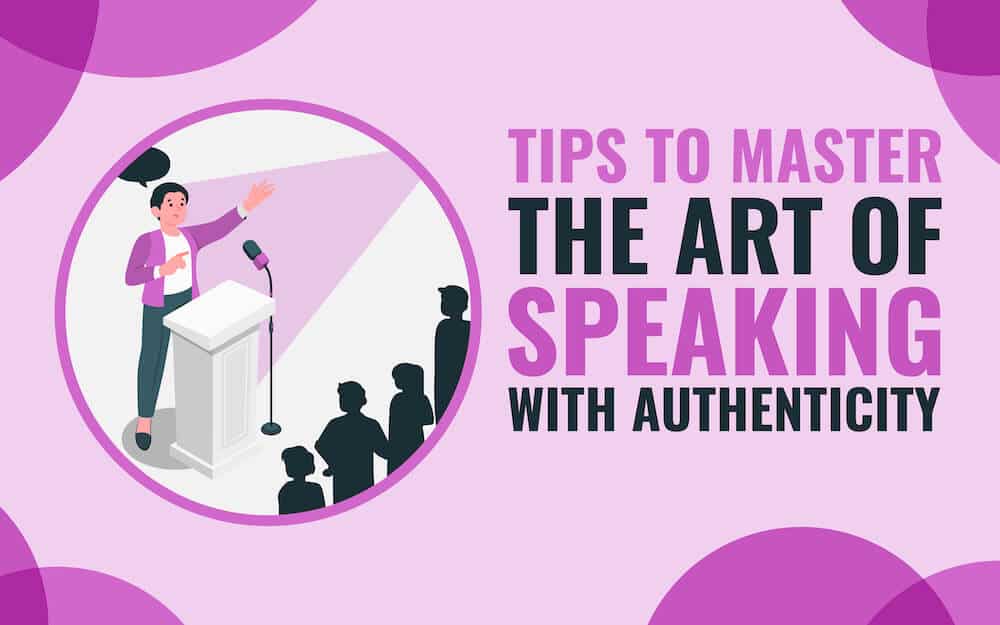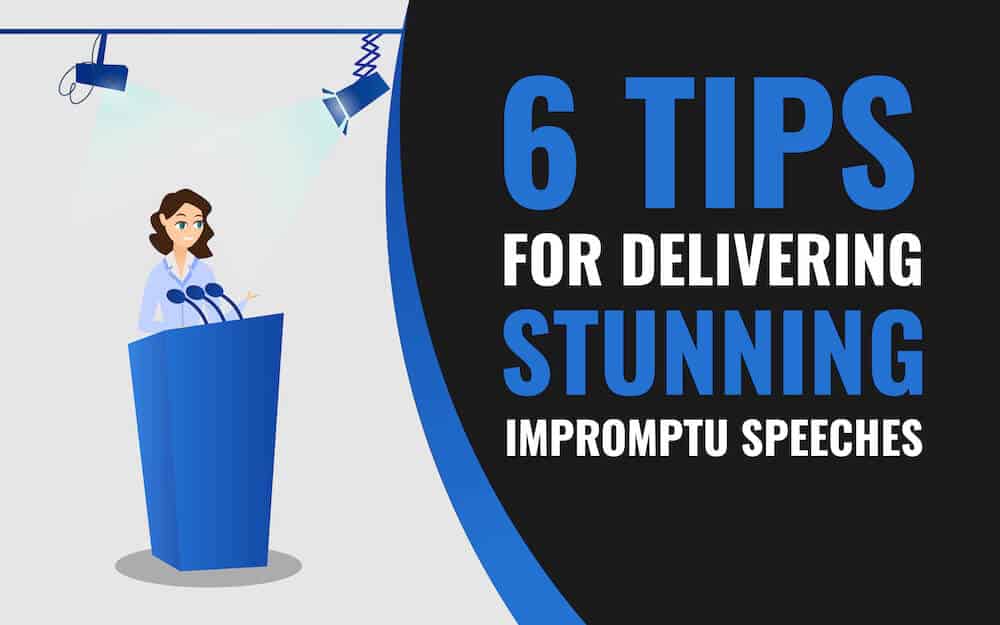
Public speaking is a vital skill for business owners, potential entrepreneurs, marketing and sales executives, coaches, trainers, and all the individuals related to professional services. It gives an opportunity to connect with like-minded people, establish yourself as the thought leader and influencer in your professional network, and create your own unique identity. But, for many of us, public speaking is no less than a phobia. The mere thought of standing on the podium under the spotlight and addressing the large audience spikes up adrenaline rush and breaks us in a cold sweat. Well, this is obvious! The human mind is geared to scrutinize all possible negative scenarios one can think of.
To help you overcome the fear of public speaking and reduce your heebie-jeebies, I have explained the 10 ‘P’s in this post. Understand them, master them, and then nothing can stop you from becoming a good public speaker. So, here we go!
Preparation
Good speech doesn’t happen by chance; it is the result of thorough preparation. There is a famous quotation, “A speech well-prepared is nine-tenths delivered.” You cannot fake an engaging presentation by cramming the content and speaking it in front of the audience. Therefore, preparation is the only key to deliver a gripping talk.
Some Useful Tips:
- Pick the topic that you are most passionate about. It will help you deliver the message confidently and energetically.
- Jot down your thoughts and do rigorous research to collect more information, data, evidence, and supporting points to strengthen your core message.
- Put your audience first, and keep their attention span in mind while preparing the speech.
- Tailor your speech in such a way that it resonates with the audience.
- Prepare a concise sentence that clearly communicates the purpose of your speech.
- Make use of visual aids to make your presentation persuasive and compelling.
- Keep the opening impactful. It may be informative, surprising, humorous, or anything that grabs the audience’s attention.
- Craft the conclusion in such a way that it inspires the audience to take some action or trigger them to make the most of the information you have provided.
- Once you have written the entire speech, edit it ruthlessly.
In order to avoid the last-minute hassle, you must take care of all minute details in advance.
Practice
There are no shortcuts to success. Do rehearsals as much as you can to get closer to perfection. The more you practice, the more you will get to know the inside out and upside down of your presentation. It will also instill confidence in you and reduce nervousness.
Some Useful Tips:
- Re-create the speech setting.
- Practice the entire speech aloud in front of a mirror, online audience, friends, or co-workers until you deliver it effortlessly.
- Rehearse with the help of visual aids and props.
- Ensure that you are pronouncing the words correctly.
- Pay attention to their reactions, and try to find out if they are understanding what you are communicating.
- You can also ask someone to make the audio and video recordings of your speech. Review it and improve the areas where you lack the most.
- Ask your friends to record the time duration of your speech. It will help you know if you can deliver the whole speech effectively within the given timeframe or not.
- Ask your friends to provide honest feedback and opinions about what you could improve to deliver a winning speech.
Punctuality
Arrive at the venue a little bit earlier than the audience. It will help you get rid of travel stress and provide enough time to review the aura of the room where you will be speaking.
Some Useful Tips:
- Have a short conversation with the technician to ensure that the logistics are running smoothly.
- Test your microphones and equipment in advance to avoid issues like the laptop not getting connected to the projector, poor sound quality, etc.
- Connect with some of the attendees beforehand and build rapport with them.
- Listen to the speakers before you. By doing so, you can gauge the mood and energy of the listeners. Moreover, you can take note of the points relevant to your presentation and include them in your talk.
- Finish your talk within the stipulated time – not too early, not too late.
Posture
Body posture, hand gestures, head movements, facial expressions, and eye contact have great importance in public speaking. With the right body language, you can easily win your audience.
Some Useful Tips:
- Make proper eye contact with the audience. However, avoid staring at them for prolonged periods.
- It will not leave a good impression on your audience if you keep smiling throughout your presentation. Thus, show up your facial expressions according to your message.
- Your head movements can interpret a lot about your presentation. So, pay heed to it.
- Use your hand gestures correctly to complement your verbal message. Don’t put your hands in your pocket, don’t clench them, and avoid crossing your arms.
Projection
Nervousness and stress are apparent when you speak in front of a large crowd, but you must avoid projecting this uneasiness. Instead, you must look comfortable and confident.
Some Useful Tips:
- Don’t hide behind the podium to get unnoticed. Also, avoid standing with feet together as it gives the impression that you are apprehensive or inexperienced.
- Avoid twirling your hair and biting your nails.
- Vary the volume, pitch, and speed of your voice for maximum impact.
- Take deep breaths, and do vocal exercises and meditation before the presentation.
Positioning
Delivering the whole speech from one spot will make your audience feel bored. So, you must do maximum utilization of the stage, but wisely. Move from one side to another side of the stage to engage listeners sitting in different parts.
Some Useful Tips:
- Start from the center stage. After 20-25 seconds, shift towards the right and then after 30-40 seconds move towards the audience on the left.
- Walk at your normal pace during transitions.
- Avoid moving on the stage without a purpose or just for the sake of walking.
- Don’t walk too much as it will distract the audience.
Pace
According to research, 140-160 words per minute is the ideal speaking pace to influence your audience. It will be difficult for the listeners to comprehend the information if you deliver more than 160 words per minute. But, if you deliver less than 140 words per minute, it will give the listeners a perception that you are a slow thinker and incompetent, and they will lose their interest in your talk. Therefore, if you want the audience to listen to you enthusiastically, be thoughtful of your pace.
Pause
Don’t rush through your presentation; pause wherever needed to help the audience relate with your thoughts.
Some Useful Tips:
- Pause before and after the main points, at every sentence, and after the last sentence. You should also pause before and after you transit from one talking point to the next.
- Avoid using filler words, such as ah, um, well, you know, so, etc. These words reduce the credibility of your message.
Parlance
If you want to make your presentation impressive and easy to understand, use good vocabulary, phrases, and idioms.
Some Useful Tips:
- Avoid using words that you use in ordinary conversation with friends and family members.
- Don’t use a single word too many times. Instead, use synonyms.
- Avoid using jargon.
Personal Reflection
The audience will be able to relate better with your presentation if it reflects your personality. You can add your ‘individuality’ and make your speech unique by including your own stories, experiences, and humor.
Hope you find the above information insightful. If you like the post, share it and let us know your thoughts in the ‘Comment’ section.



